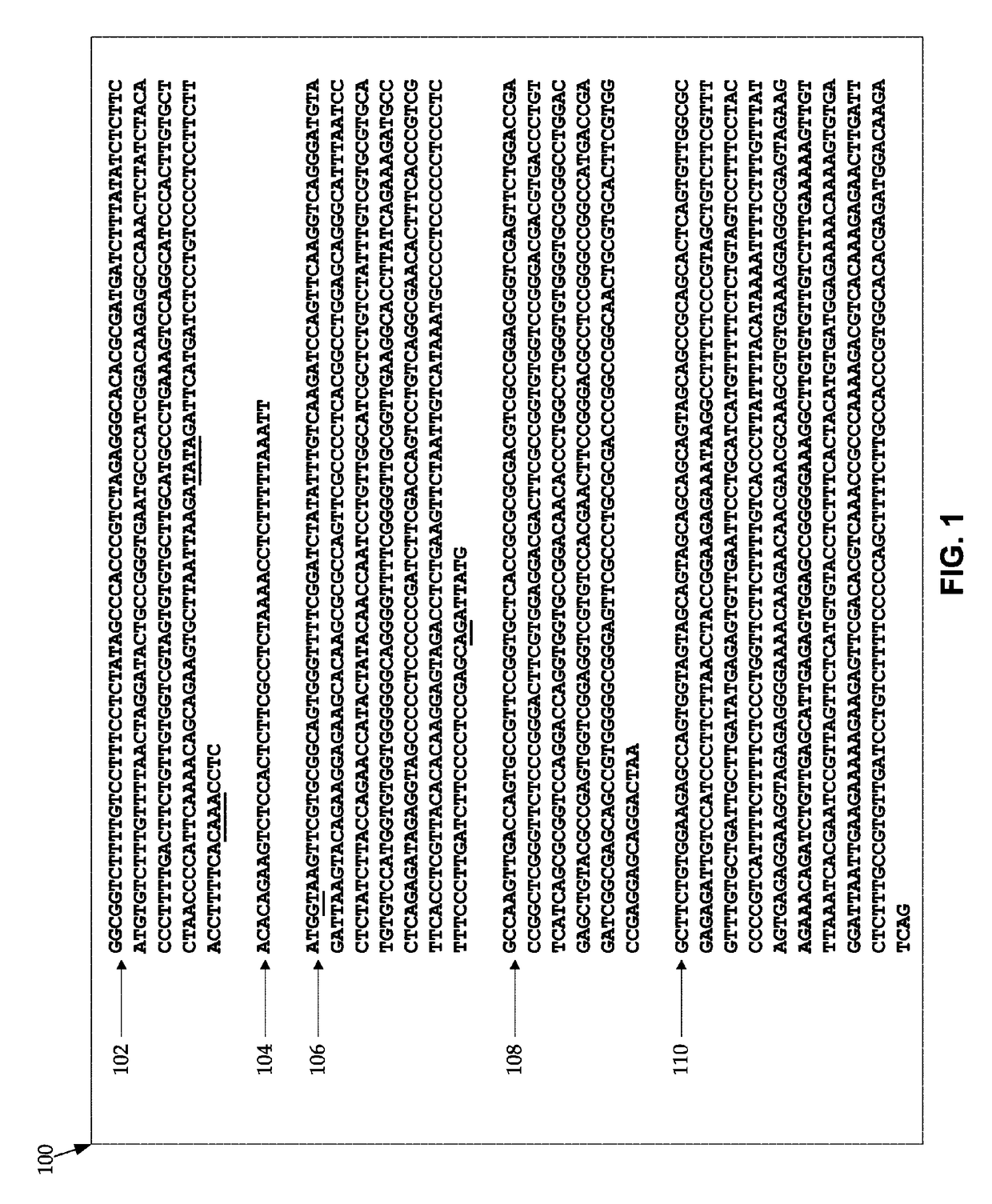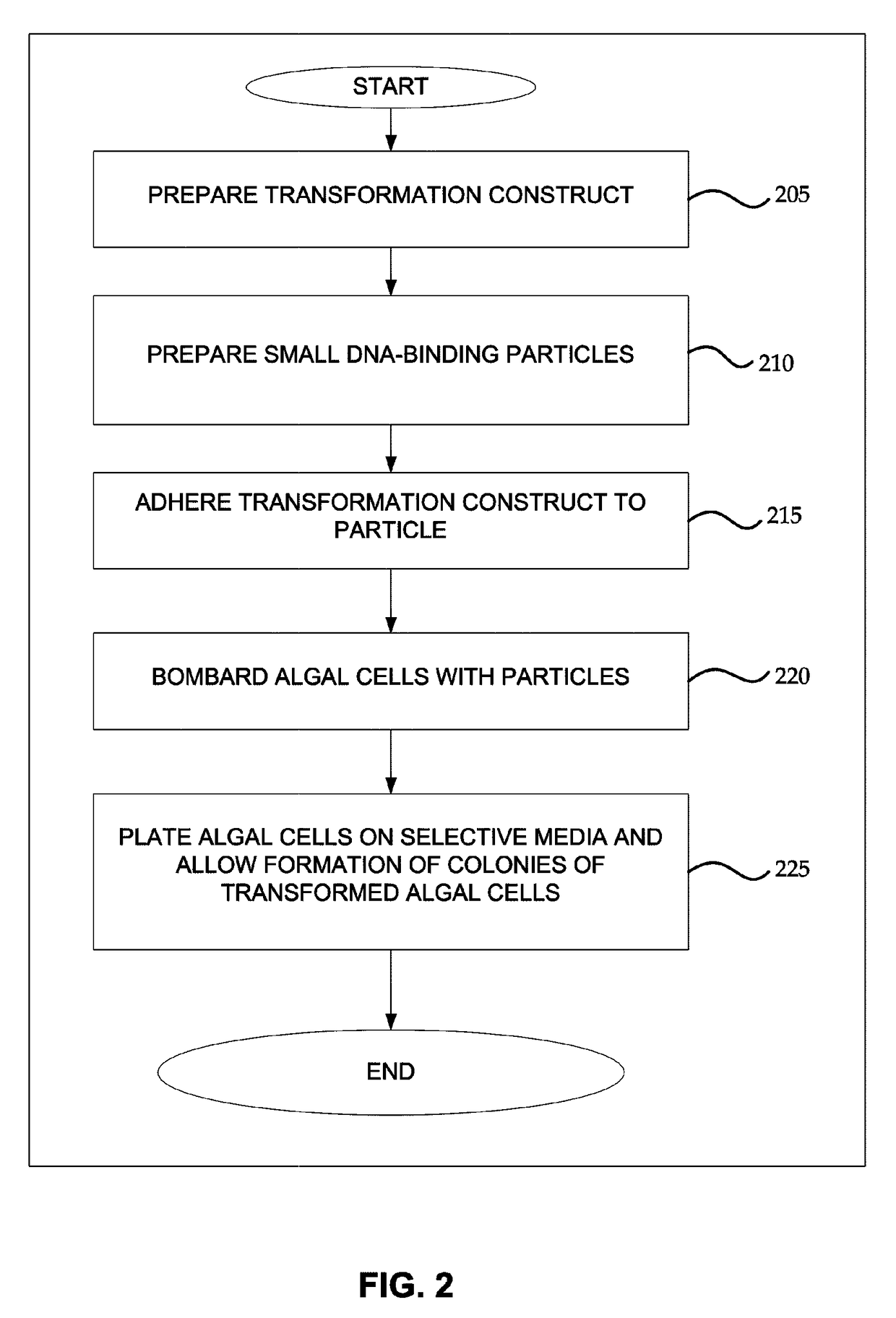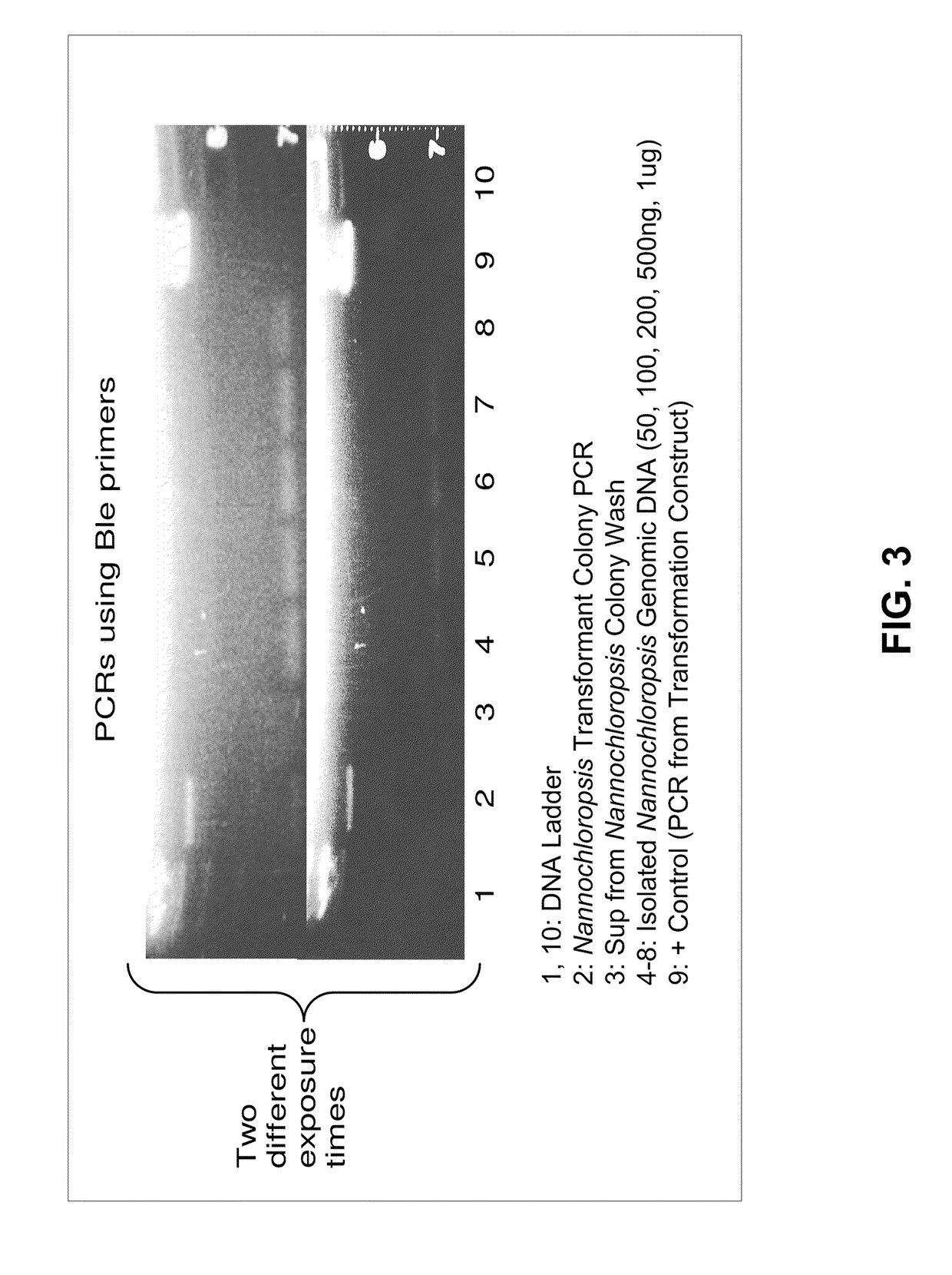Transformation of algal cells
a technology of algal cells and translocation, applied in the field of molecular biology, can solve the problems of difficult to achieve the transformation of small algal cells with strong cell walls, and achieve the effect of low conductivity
- Summary
- Abstract
- Description
- Claims
- Application Information
AI Technical Summary
Benefits of technology
Problems solved by technology
Method used
Image
Examples
example one
[0029]Nannochloropsis oceanica cells were grown in low light (85 μE / (m2*s)) to mid log phase in F2 media, 50% seawater (See e.g., Guillard, R. R. L. and Ryther, J. H. 1962. Studies of marine planktonic diatoms. I. Cyclotella nana Hustedt and Detonula confervacea Cleve. Can. J. Microbiol. 8: 229-239). Nannochloropsis cells were then pelleted at 2500 g for 15 min. The pellet was then resuspended in fresh media. 5*10^9 resuspended cells were spread on petri dishes (F2 media, 50% seawater, 1% Bactoagar™ from DIFCO) and allowed to dry. 0.6 μm gold particles (Biorad) were coated essentially as recommended by Biorad with transformation vector PL90. The plated cells were then bombarded with microparticles (coated with transformation construct DNA as recommended by Biorad) by a particle gun (Biolistic PDS-1000 / He particle gun Bio-Rad) at vacuum pressure of 29 mm Hg utilizing the heptameric adapter from Biorad. All different stages were used in combination with 3 different rupture discs (1100...
example two
[0039]We followed the procedures of Example One, except this time utilizing a 1510 Branson Bath Sonicator, 0.6 μm gold particles were sonicated for 1-hour just prior to DNA precipitation onto beads. Using the sonicated beads, 14 μg DNA produced approximately 20 zeocine-resistant transformants.
[0040]Detailed Procedure.
[0041]Growth and preparation of cells: the cells were grown in 2 L flasks in F2 medium (containing seawater of half salinity) to early log phase. The cells were then harvested by centrifugation for 10 min. at 2500 and gently resuspended in fresh F2 medium. 5*10^9 cells (in ˜400 μl) were then plated on an agar plate (containing 1% Bactoagar™ from DIFCO) and allowed to dry for ˜20 minutes in a sterile hood.
[0042]Preparation of Particles.
[0043]Different sizes and materials of particles were used (all obtained from Biorad), i.e. Tungsten particles 0.7 and 1 μm average diameter and gold particles 1 μm or 0.6 μm average diameter. Prior to the precipitation of the DNA onto the...
example three
[0059]Transformation via Electroporation.
[0060]Detailed Procedure.
[0061]Growth and Preparation of Cells.
[0062]Nannochloropsis oceanica was grown in 2 L flasks in F2 medium (containing seawater of half salinity) to mid log phase. The cells were then harvested by centrifugation for 10 min. at 2500 and gently resuspended in 375 mM sorbitol. The cells were washed several times in 375 mM sorbitol solution in order to minimize conductivity of remaining medium. The cells were finally resuspended to a final concentration of 10^10 cells / ml and used for transformation within an hour.
[0063]Electroporation.
[0064]Electroporation was performed in a Biorad GenPulser I Electroporator utilizing 2 mm cuvettes. 100 μl cells at 10^10 cells / ml were pipetted into a 2 mm cuvette and varying amounts of transformation construct in <5 μl volume ddH2O added. The cuvette containing the DNA-cell mixture was gently snipped for mixing and then placed into the electroporation chamber.
[0065]Device settings were exp...
PUM
| Property | Measurement | Unit |
|---|---|---|
| diameter | aaaaa | aaaaa |
| size | aaaaa | aaaaa |
| size | aaaaa | aaaaa |
Abstract
Description
Claims
Application Information
 Login to View More
Login to View More - R&D
- Intellectual Property
- Life Sciences
- Materials
- Tech Scout
- Unparalleled Data Quality
- Higher Quality Content
- 60% Fewer Hallucinations
Browse by: Latest US Patents, China's latest patents, Technical Efficacy Thesaurus, Application Domain, Technology Topic, Popular Technical Reports.
© 2025 PatSnap. All rights reserved.Legal|Privacy policy|Modern Slavery Act Transparency Statement|Sitemap|About US| Contact US: help@patsnap.com



